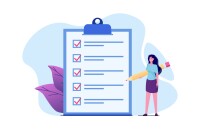Search
There are 29 results.
Category
Tag
Tag
All (29)
Alt Text (1)
Belonging (3)
Color Contrast (1)
Communication (2)
Community (2)
Content Creation (12)
Course Materials (9)
Course Preparation (3)
Diversity (3)
Equity (2)
Faculty Support (1)
Formative Assessments (1)
Images (1)
Inclusion (8)
Page Design (1)
PowerPoint (1)
Representation (2)
Rubrics (1)
Screen Readers (1)
Universal Design for Learning (UDL) (3)
Video (1)
Visual Accessibility (2)
Accessible Use of Color
Some students (older learners, learners with partial sight, learners with color blindness, and learners using monochrome or text-only displays) have difficulty perceiving color. To ensure that course content is perceivable to all learners, you should follow the color use guidelines that have been established by the World Wide Web Consortium (W3C), the organization responsible for international standards of web accessibility, including the Web Content Accessibility Guidelines (WCAG). Three essential WCAG requirements, known as success criteria, are summarized below.
Spreadsheet Accessibility
Spreadsheets are used for a broad array of data-related tasks and projects across numerous disciplines. Maximizing the utility of spreadsheets as course materials requires careful attention towards their content and formatting. In this piece, we present recommendations for enhancing the clarity, consistency, and accessibility of course spreadsheets for students.
Accessible Use of Text
Students with diverse cognitive, linguistic, and academic abilities benefit from accessible text. The Web Content Accessibility Guidelines (WCAG) establish numerous requirements (known as success criteria) to ensure that text is perceivable, operable, and understandable to all users. This guide discusses the essential criteria related to text accessibility. Following these guidelines when creating course content, such as documents, slides, and pages in a learning management system (LMS), will help you eliminate potential barriers for your learners.
Inclusive Citation
Inclusive citation practices can empower educators to cultivate equity, enrich academic discourse, and create welcoming learning environments. By prioritizing diverse perspectives and ensuring the representation of underrepresented voices, instructors can address systemic inequities in scholarship and amplify marginalized contributions. Such efforts not only deepen students’ critical engagement with course materials but also foster a sense of belonging, preparing them to thoughtfully navigate an increasingly interconnected world.
Rubrics as a Tool to Support Equity and Inclusion
While student populations have become increasingly diverse, many groups, including first-generation, non-native English speakers, and individuals with disabilities, still face barriers and bias that can derail their success in college (Super et al., 2020). Traditional grading practices—including penalties for late work, writing in dialects other than standard English, and even plagiarism— are prone to bias and only perpetuate disparities (Feldman, 2019; Savini, 2021).
Best Practices to Support Students With Cognitive Disabilities
Cognitive disabilities are common among adults in the United States and are especially prevalent among young adults (Okoro et al., 2018). Such disabilities impact mental functions such as memory, attention, perception, and calculation, among others. As a result, students with cognitive disabilities may struggle with academic tasks generally—and online coursework specifically—in unique ways (Petretto et al., 2021; Reyes et al., 2022). Since online courses are often text-heavy, for example, students with dyslexia may find them more challenging to navigate than on-ground classes (Chen et al., 2015). Students with cognitive disabilities may also struggle with navigating inconsistent online course layouts, comprehending complicated directives, and engaging with non-essential course components. Finally, when online courses are large or impersonal, students with cognitive disabilities may have difficulty focusing on assignments and other coursework (The Best Schools, 2024).
10 Key Considerations for Online Course Development
Designing and delivering effective online courses requires careful consideration of numerous factors. As a result, it can be difficult to determine where to begin in the process, particularly for course developers and instructors who are new to online learning. This piece presents a curated list of resources aligned with 10 key considerations applicable across academic disciplines and degree programs.
Inclusive Language
Inclusion entails creating an environment of open participation for all individuals. Using inclusive language across course content and communications can help reach every learner and ensure all students feel heard, valued, and validated (Márquez & Melero-Aguilar, 2022). This piece will explore the thoughtful use of inclusive language in online learning environments.










